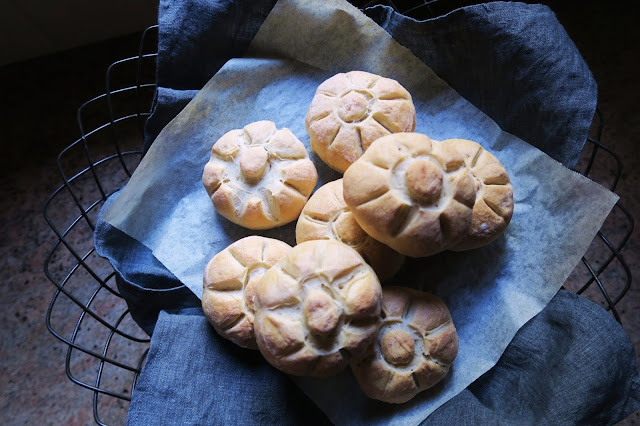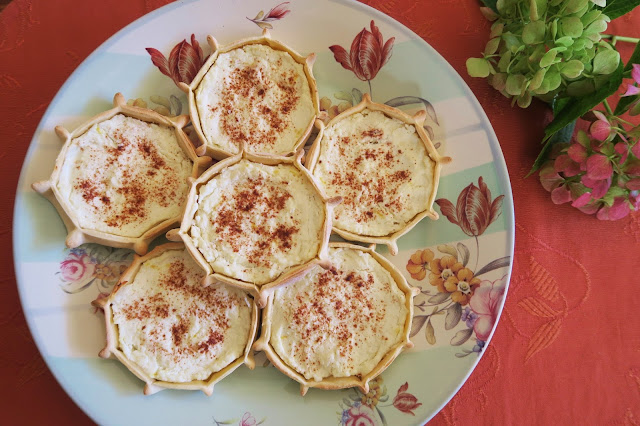
Welcome to my long overdue
addition to The Heirloom
Chronicles blog titled Wild Harvest. This personal blog would not
be what it set out to be without reference to and inclusion of mamma's
favourite part of the garden and wild greens. A keen researcher of all
things herbal and remedial with most of her favourite readings based around
these topics; mamma has been my inspiration for this extension of discovery and
learning which ties back to 'cucina povera' (peasant cooking).
Amongst their seasonal vegetables, you are bound to find some strange
looking erbe (herbs) or wild edible greens that
have been selectively planted or just happen to sprout from a neglected corner
of their orto (garden). Ask mamma what they
are and she will happily engage in conversation with you about their medicinal
values and how to prepare brews to remedy this and that. The inclusion of these
greens into her cooking is not unfamiliar to us growing up, so this new section
will be filled with informative readings and interesting recipes that will
encourage you to explore different flavours and reap their health benefits too.
We begin with a perennial bitter green called cicoria (chicory), that mamma has allowed to
grow naturally in her garden and continues to cultivate. A culinary heritage which was transported over the seas with
migration, and for many
Italians in Australia not only does it remind them of their origins, but
remains a staple in their traditional Mediterranean diet. Italian immigrants who came to
Australia must have been overjoyed when they discovered the
presence of wild chicory which both surrounded and dotted their urban habitats.
Accustomed to a simple agrarian lifestyle and to scarcity, I am certain
they delighted in the realization that they could simply walk to the nearest
empty field or suburban park, carving knife in hand, and pluck as much of the
leafy green as they could carry.
True, not everyone appreciates wild chicory,
some despise not only its bitter taste, but also the customs surrounding its
harvest and consumption. I recall my mother engaging in such practice and
invariably me feeling a little embarrassed that this should happen
while out enjoying a family picnic; harvesting chicory outside of our own
backyard was simply not cool.
Wild chicory comes in at least two varieties: Tarassaco (Taraxacum officinale) a large
genus of flowering plants in the family Asteraceae which consist of species commonly
known as dandelion that sprout yellow flowers. The leaf may also be confused
with Cicoria (Cichorium Intybus) part of the
dandelion family but with bright blue flowers. Mamma grows both varieties
in her garden. In Italian, also known as dente di
leone (lions tooth), soffione (dandelion puff), piscialetto (bed
wetting - due to its diuretic effects), ingrassaporci (pig
fattening - as it was also used as feed for pigs), or more commonly known
as cicoria selvaggio and cicoria burda (wild chicory).
According to research it has a long and ancient history associated
with its cultivation that spans a few continents. Appreciated by many cultures,
it was a native plant of Western Asia, North Africa and Europe, originally
cultivated by medieval monks to extract a tonic for the treatment of
gallstones. It was classified as an age old herb that was used
medicinally well before making its way on our dinner plates.
Mamma uses it religiously and simply swears by its health benefits
and still to this day informs us of its purifying and anti-inflammatory
properties - rich in nutrients, minerals and
anti-oxidants, and insists on the
importance of including it in our diet. According to
her research, the dandelion leaves and root help purify the body; helps
stimulate the bile, hepatic and renal function, activating the excretory organs
(liver, kidney and skin) for the processing and elimination of toxins.
She uses the leaves in various recipes, drinks the water in which the
greens are boiled in and uses the root in various brews.
Chicory has been known as a mainstay of the
'poor kitchen' – traditional Italian food that is simple to prepare,
nutritious, tastes great and avoids waste. It was, and to a large extent
remains a staple of the central and southern Italian table. It is a
standard cooked green commonly sold at mercati (markets) along with other wild
greens all over Italy. In fact chicory has become a
fashionable 'foodie' obsession available at well known restaurants and gourmet
markets everywhere. It has a pleasing bitterness that can be removed by
giving it a first boil before using it in a dish unless using the very young
leaves.
I love its bitterness and choose to just sauté with a small amount
of oil, and by pass the boiling stage completely. If you cannot find
chicory at your local market, dandelions from your garden make a lovely
substitute and as can be seen in the photos below, both varieties have been
picked from mamma's garden and used in this dish. The days not long ago
when picking chicory was a source of embarrassment seems far behind me now and
I am even considering giving up weeding and letting them grow in my
garden.


There are many
delicious recipes using this wild bitter green, many of which I have eaten
growing up, notably the Roman cicoria
strascinata / ripassata (bitter
greens with garlic and chilli). There is also a nice complement to
be had between a bitter green and a creamy subtle bean such as the white cannellini which
works nicely with dandelion greens adding that extra flavour and nutrition.
Another favourite of mine is combining chicory with a mash of potatoes
and turned into crocchette di
patate e cicoria (potato and chicory crocchettes) - my recipe
selection for our Cucina Conversations round table coming soon this month.
For this post I have chosen to share mamma's favourite way of eating
cicoria which I am certain my grandparents ate during those leaner months of
the year and that is in a dish called pane cotto.
Il pane cotto or in
papa`s dialect, pane cuott',
would have to be the poorest dish in the south of Italy, born out of scarcity
and whose closest cousin is the better known and richer in ingredients, Tuscan
dish called 'pappa al pomodoro' (tomato &
bread soup). This dish however only uses four main ingredients - stale
bread, chicory, garlic and olive oil. It can be prepared with any wild greens
adding the bitter undertones that cut through the only rich ingredient - the
olive oil that it is sautéd in.
The wild greens can be substituted
with silverbeet/chard, Tuscan kale or any other green that holds itself firm
without becoming too mushy. For those who want to enrich this dish, it
has been known to make a hearty winter meal with the addition of beans and
cooked in stock. In times of extreme poverty, this dish was hailed as the
savior to hunger and ultimate death. As a famous southern Italian saying
goes, 'Se non era pu' pane cuott', u'cafone foss' muort.' Translated in sweeter terms, 'if
it wasn't for il pane cotto, the poor peasant would be
dead'.
Pane Cuott' - Pane Cotto con Cicoria
Serves 2 as a main course
Ingredients:
500 g greens such as chicory, dandelion, silverbeet / chard or a mix of all
2 garlic cloves
4 thick slices of stale ciabatta bread or pane di casa (home baked sourdough)
4 tblsp olive oil
1 cup of water or stock
salt
1 small dried red peperoncino (chilli) or a pinch of dried chilli flakes
Remove the root and any
discoloured leaves and discard. Wash well in cold water and drain. In a
pot of salted water that has been brought to the boil, add the greens and cook
for a 5 minutes until tender. This will also remove some of the bitterness
if the leaves are older. Using a slotted spoon, lift the greens out of the
water and drain.
You will need a large frying or sauté pan or even a wok will work well. Peel and crush 2
cloves of garlic with the back of a knife. Add 4 tablespoons of olive oil and sauté the cloves of garlic
ensuring they do not burn while flavouring the oil, add some chilli flakes. Add
the chicory that has been chopped in half, 1 cup of water or stock, a pinch of
salt, the roughly chopped bread and allow it to cook for 5 minutes but don't
overcook the bread. Remove from the heat and allow the bread to soak up all the liquid. The idea is to achieve a moist dish that isn't overcooked
like pappa (baby
food). Best served hot in a bowl with an
extra drizzle of olive oil. PS: I forgot to add the drizzle of olive oil before I took these photos. :)
Enjoy with a glass of red wine!
Stay tuned for this month’s
Cucina Conversations posts on vegetarian and vegan dishes for the
lean months of Quaresima (Lent). I will cook again with cicoria and make my delicious crocchette di patate e cicoria (potato and chicory croquettes)







Comments
Post a Comment